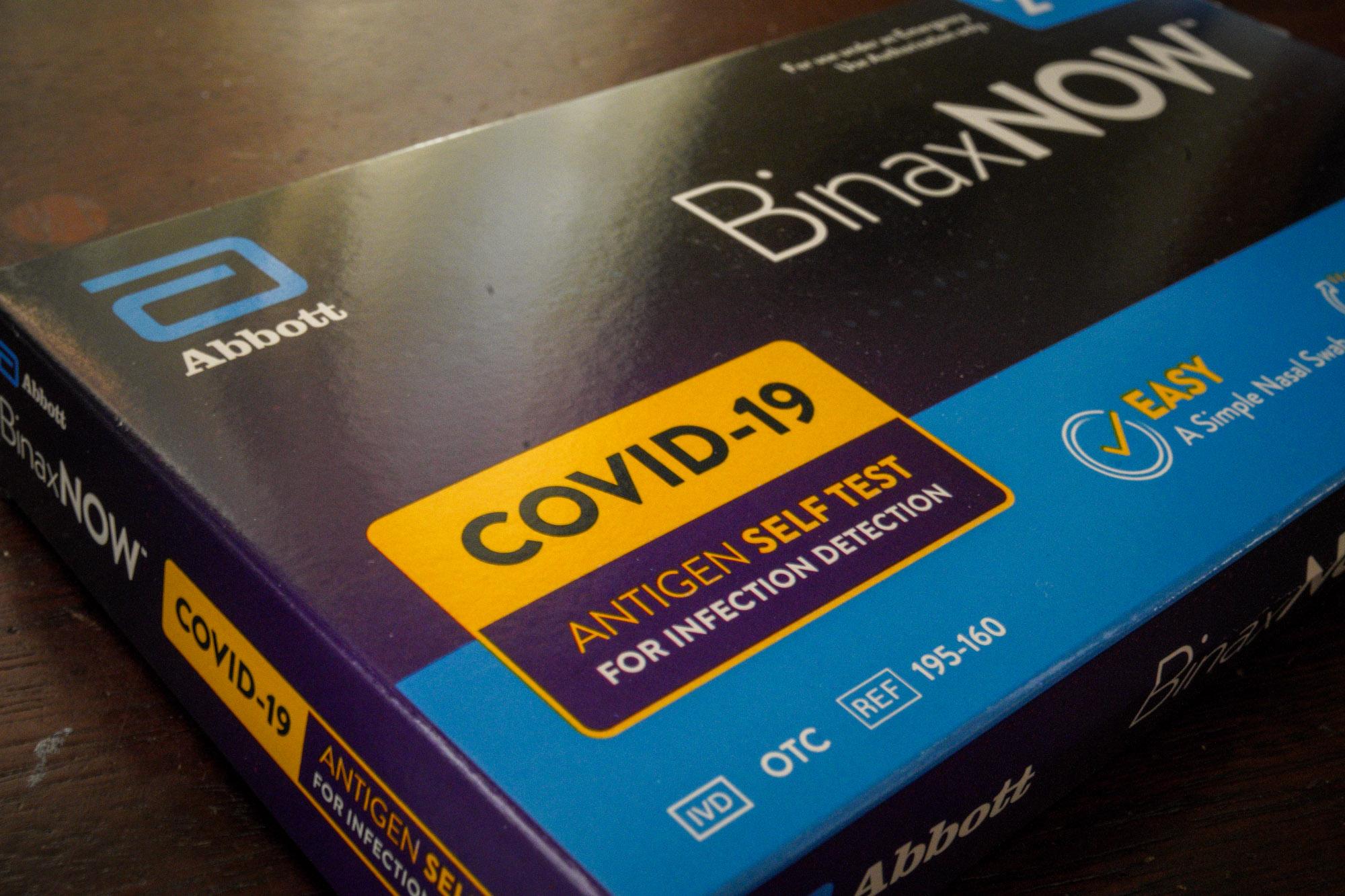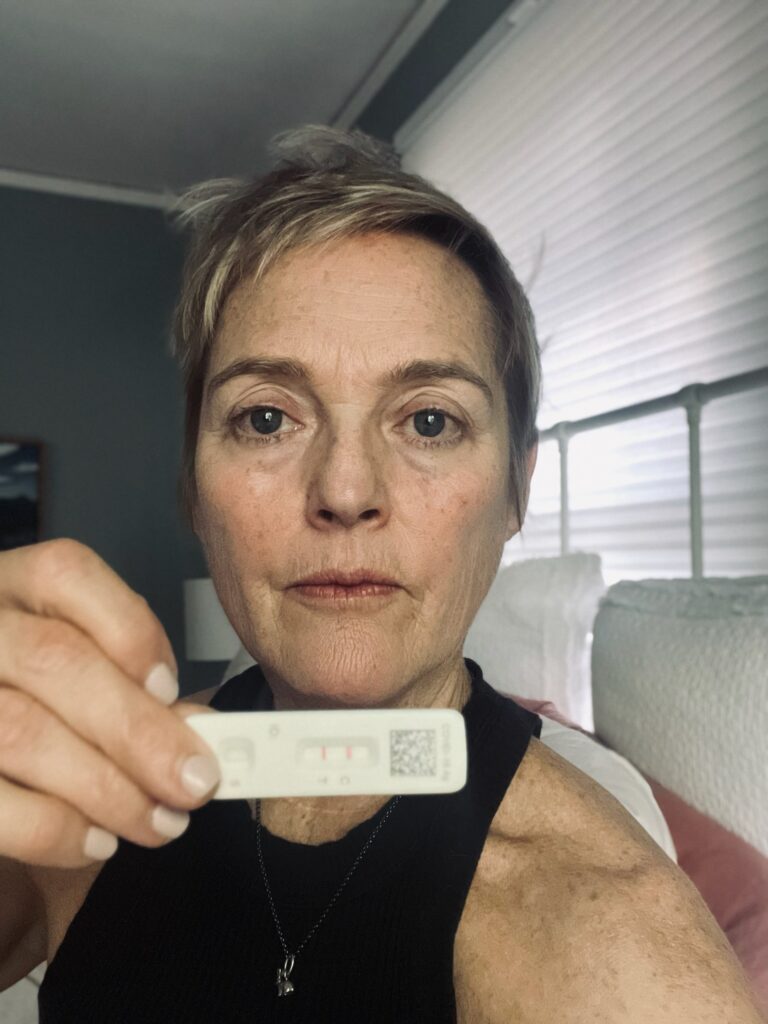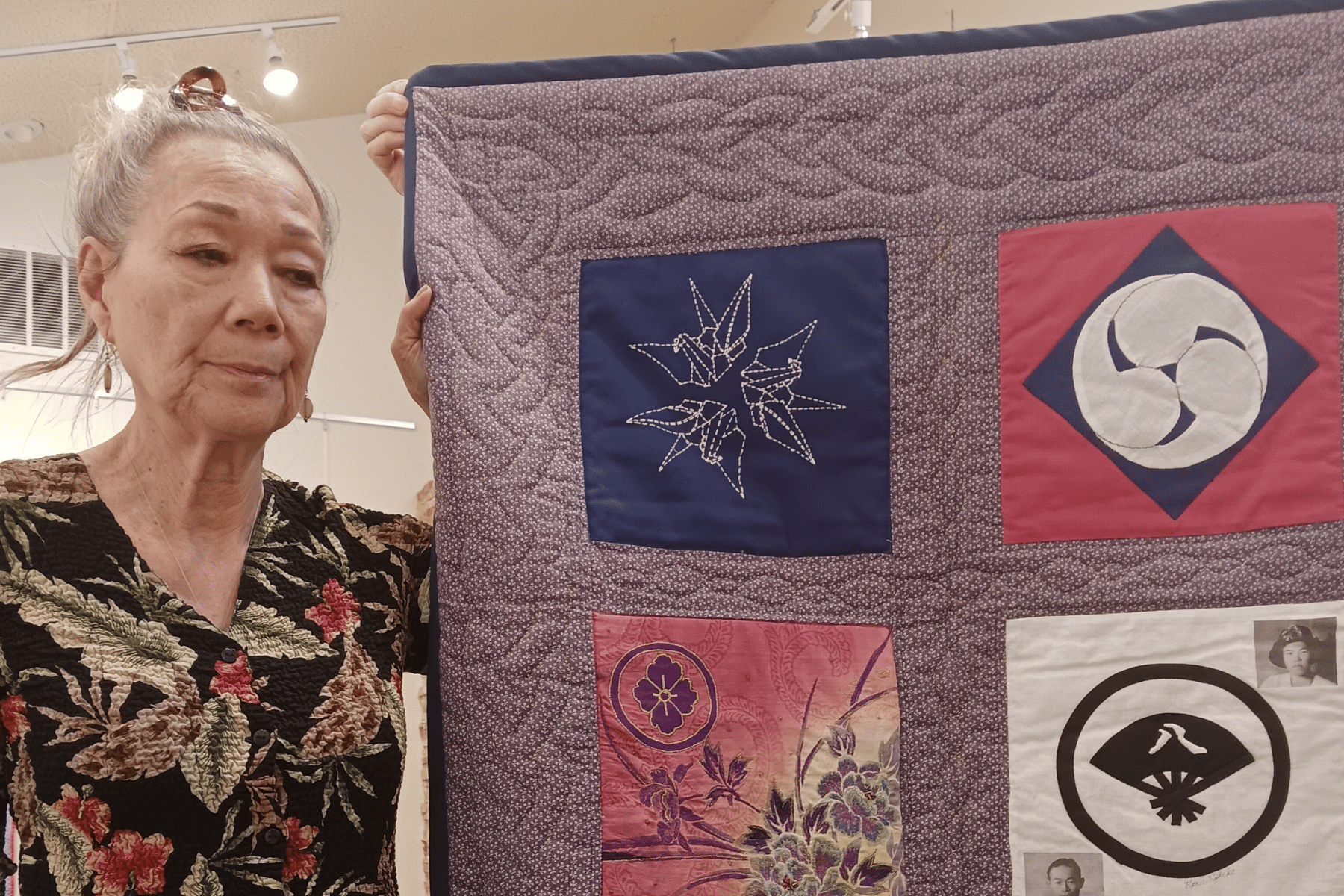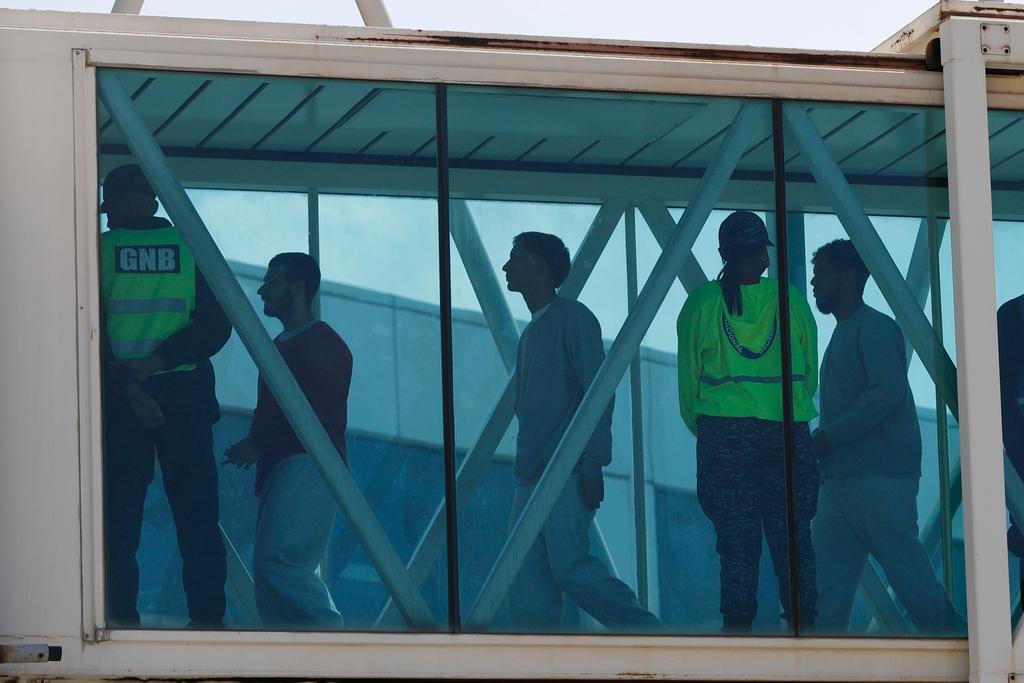
With summer winding down, Denver resident Tracy Wohlgenant shared a piece of frustrating news with her friends on Facebook: She’d caught COVID-19. She described it as a cautionary tale.
“After 13 days of COVID, with day 10 testing negative, I woke up very sick again this morning with a raging sore throat — and tested positive,” she wrote. “This is what they call ‘rebound COVID’ and it sucketh. I urge you all to start masking again, this crud is whipping around like Hydra.”
(For those of you unfamiliar with Greek mythology, that’s a many headed monster who grows two more heads when one is cut off.)
Both she and her husband got sick at the same time, three days after dinner at a downtown restaurant and bar with some relatives, including a couple visiting from New York. She got the initial vaccination series plus boosters.
“I have never had COVID and I think a little part of me believed I was immune — so I was surprised that I got sick,” she said via email. Her throat was too sore to do an interview over the phone.
Wohlgenant, who is 60, noted she did take the antiviral medication Paxlovid during her initial infection and wondered if that's why the virus had bounced back. All in all, not a great experience.
“Ugh, blech, blerg,” wrote Wohlegenant, who is a TV story editor for outlets like HGTV and Food Network.
Many Coloradans, who wishfully thought COVID was in the rearview mirror, can relate.
The latest state data confirm the upsurge in the spread of the virus. Cases, the sentinel positivity rate (the rate of positive cases) and wastewater detections (something Colorado has helped pioneer) all also are rising, with schools back in session and the long Labor Day weekend here.
Hospitalizations for patients with confirmed cases hit 112, the highest number since the end of May, but far below pandemic peaks.
“Even last year when we had an increase in transmission that occurred about this time, that number of hospitalizations was over 300,” said state epidemiologist Dr. Rachel Herlihy. “So what we're experiencing right now is a pretty small increase.”

Things have changed since earlier pandemic years, she said, in large part due to vaccination and many people getting some protection from earlier bouts with the virus.
“We're obviously in a much better place now than we have been in years past in that we have immunity from prior infection. We have immunity from vaccination, we have lots of effective treatments that are available to prevent hospitalization,” she said. “So we're in a really good place.”
Some of the old language doesn’t quite apply anymore.
“I think that ‘surge’ is probably an inappropriate word,” said Dr. John Swartzberg, a clinical professor emeritus and expert in infectious diseases at the UC Berkeley School of Public Health.
He noted cases, hospitalizations and deaths are all up nationally, but nowhere near the highs of earlier in the pandemic and hospital bed capacity is generally in fine shape.
“This swell of cases right now is disturbing, but compared to where we've been and compared to our resources to deal with it, we're in good shape,” Dr. Swartzberg said.
Still, COVID-19’s return is jarring.
“I knew I was really sick on DAY ONE of symptoms — I had a scratchy chest, heaviness in my lungs, deep cough, achy back and a fever,” Wohlgenant said. “I have never had a fever like this — I was, literally, dripping sweat.”
What’s driving the acceleration of transmission? It’s difficult to say.
One factor for many: fading immunity after getting a vaccine shot months ago.
“Waning immunity can occur because the virus changes or it can change because our immune system protection is declining,” said Herlihy. “We know that there are some new omicron sub variants that are circulating.”
What COVID variants are now circulating?
More than 20 “variants of concern” are currently circulating in Colorado, according to the state health department’s COVID-19 dashboard. The most recent information comes from the two weeks before Aug. 12.
Only two variants registered in the double digits of specimens collected: EG.5 with 20 percent and XBB.2.3, which made up 14 percent. These variants perhaps have an advantage in escaping our immune system, according to Herlihy.
Two dozen other variants all made up less than 10 percent of circulating variants.
But another one, BA.2.86, is generating headlines around the world.
This new variant has now been detected in at least 15 cases across six countries, including Israel, Denmark, South Africa, and at least four states, Michigan, Virginia, Ohio and New York. While not many cases of the variant have been detected, the drop in COVID monitoring globally has made any true understanding of the spread or risk of specific variants impossible.
Whether the BA.2.86 variant or another one will prove particularly dangerous is anyone’s guess.
“It's clearly here, and it clearly has a whole panoply of new mutations that have to do with transmissibility,” Swartzberg. “It doesn't appear to be more virulent, but we only have 13 cases to look at.”
“We're keeping a close eye on that one, but it hasn't yet made an appearance in Colorado that we're aware of,” said Herlihy.
Should I get a COVID booster now?
COVID shots, targeting one of the most prevalent omicron variants, XBB.1.5, are expected to be available in roughly mid-September, pending Food and Drug Administration authorization and review by the Centers of Disease Control and Prevention.
But gone are the days of mass public vaccinations at large sites, like the parking lots of arenas, stadiums and county fairgrounds. Instead, the health system is pivoting back to the older model, where many vaccinations will take place in locations like doctor's offices, pharmacies and public health clinics, Herlihy said.
Another notable change is the cost of vaccines, Dr. Michelle Barron, an infectious disease expert at UCHealth, said the COVID vaccine is no longer free, as was the case all along with the flu vaccine. “There'll either be a cost associated with it or your insurance hopefully will be covering it,” she said.
UC Berkeley’s Swartzberg said he thinks the newly formulated vaccine should hold up well to the latest variants, with the familiar warning that some more troublesome variant could always emerge.
“We still should have pretty good immunity from our past infections and from previous immunizations and from this new one in terms of T-cell immunity,” involving cells that help the immune system protect from disease, Swartzberg said. He said he’s “very optimistic about the vaccine, but there is something on the horizon that's nagging at us,” the BA.2.86 variant discussed earlier.
Many health officials recommend waiting for the new booster -- though there are some caveats.
“Our recommendation for most folks is to not get a COVID vaccine until that new one comes out,” said Herlihy. “So sometime probably starting in mid-September to early October.”
There are some exceptions though, because COVID transmission levels are higher now than they've been in many weeks.
Those include for people who are not up to date on the COVID vaccine and are at high risk for severe disease. They should at least have a conversation with their healthcare provider about what might be right for them based on their underlying medical conditions.
But for those who are not high risk, waiting also makes sense for a couple of reasons. Doctors and health officials expect the updated shot to give enhanced coverage against the variants now floating around. Also, a potentially bigger surge of transmission is likely in the winter months — that’s what happened the last three years of the pandemic.
Plus, since immunity from the vaccines wanes over time, it’s a good idea to time a shot to make sure it endures through those colder months. When in doubt, consult your healthcare provider.
Health officials are preparing for the triple threat of COVID, flu and RSV
Respiratory syncytial virus, or RSV, is a common respiratory virus. It usually causes mild, cold-like symptoms. Most people recover quickly, in a week or two, but it can be serious, according to the CDC. Infants and older adults are more likely to develop severe cases and need hospitalization.
The strategy is to encourage vaccination for all three. Plus monoclonal antibody products are available to protect young kids and infants from severe RSV cases, according to the CDC.
“Certainly, if you're older or you have underlying conditions, I would strongly recommend it,” said Dr. Barron. “It's going to be another one of those seasons where people will get sick and end up in the hospital. So if we can avoid that, we've won. Everybody wins in that situation.”
Swartzberg said he’s confident this year’s formulation of the flu vaccine is well matched for what's coming, given what researchers observed in the southern hemisphere, which is often a reliable predictor.
Vaccines for RSV are now available, for older adults and infants, as well as for pregnant women to prevent RSV in infants.
Swartzberg said he was looking to get all three, but plans to space them out to avoid side effects. His plan is to get the RSV shot in September, the COVID vaccine in October (six months after his last booster), and the flu vaccine in early November, unless there is an early flu season.
Bottom line, Herlihy said it’s “really exciting news that we have these new prevention strategies,” for the trio of respiratory viruses that can cause so much havoc.
Getting COVID tests is harder than it used to be
Just like vaccines are no longer available at mass sites, tests for many have gotten harder to find, and free rapid tests via mail from the federal government ended with the sunset of the COVID-19 public health emergency in the spring.
P.C.R. tests, considered highly reliable, have gotten more expensive and less accessible, but home rapid tests are still a key prevention tool. The New York Times recently answered common questions about their use.
However, authorized at-home, over-the-counter tests are available without a prescription and can generally be found online or at local stores, according to the FDA.
If you stocked up on rapid tests, check their expiration dates. Some tests last longer than others, and the FDA has extended expiration dates for some products. To check, visit this FDA website.
Will rapid tests be able to detect the new variants of the virus floating about? They should continue to pick up cases of the current strains that are circulating, according to Herlihy.
“Effectiveness is not a concern,” she said.
Here are a few different ways to get tested for COVID-19 in Colorado.
- Many people can get tested through their health care provider if they feel sick.
- Coloradans with or without insurance can get tested at pharmacies with low or no-cost testing options offered through CDC’s Increasing Access to Community Testing (ICATT) program.
- While supplies last, free home tests are available at rapid test distribution centers.
- Coloradans can use the federal Test to Treat program to seek both testing and treatment for COVID-19. Learn more about Test to Treat.
How to keep yourself healthy
The best advice for protection and prevention will sound familiar, since you no doubt have been hearing it since the start of the pandemic: get vaccinated and boosted, avoid crowds indoors, especially if ventilation is sketchy, wear a well-fitting N95 or KN95 mask and move outside when you can.
Masking is still considered a strong and reliable preventive measure against COVID-19 and other respiratory viruses, especially for those who are older or have compromised immune systems.
Many experts CPR spoke with said they will wear a mask now, depending on the current spread of the virus and the situation.
Swartzberg said he’s managed to avoid the virus. He’s now back to teaching in person but wears a mask. And he still masks up while flying or in crowded indoor settings. He and his wife did recently attend a bat mitzvah for a granddaughter, an indoor-outdoor event, and they didn’t wear masks.
“When we dine, we dine outside,” he said. “We're trying to live our lives and enjoy it, but at the same time, to minimize our exposure to this virus.”
Another pro tip: to think like an aerosol scientist about the potential nasty bugs you might inhale. Jose-Luis Jimenez, a chemistry professor at the University of Colorado Boulder, told CPR last year he believes everyone can take one simple step to reduce risk of infection and transmission: consider ventilation and airflow in the spaces you occupy.
“The basic concept is, think that everybody you are next to is smoking and imagine that they are exhaling this smoke and you wanna breathe as little of that as possible,” Jimenez said.
That means avoiding crowded indoor spaces, especially without wearing a mask, and opening windows and filtering the air, with a HEPA filter, where possible.
The risk of Long COVID increases with repeated infections
Research shows repeated covid infections puts someone at greater risk of getting long COVID, symptoms that can extend for months or years after the initial infection. And long COVID can result from even mild initial infections.
The risk of long COVID is one key reason Swartzberg continues with precautions, he said, along with the desire to not infect others, especially the most vulnerable.
“It can be crippling to your life,” he said.
A sizable share of coronavirus cases, perhaps one in 10, lead to long COVID. The number of Coloradans still suffering from long-haul symptoms could be between 250,000 and 600,000 of the state’s residents.
But research has also shown vaccination provides protection, and can reduce both the severity and duration of long COVID.
“There's been a number of studies now that have shown that association that vaccination does reduce the risk,” said Dr. Sarah Jolley, a long-COVID researcher from CU Anschutz. “It doesn't eliminate the risk, but it does definitely reduce it.”









